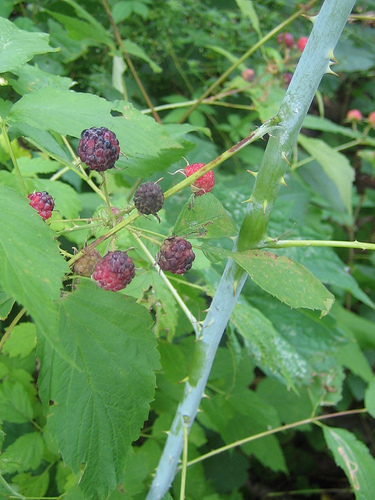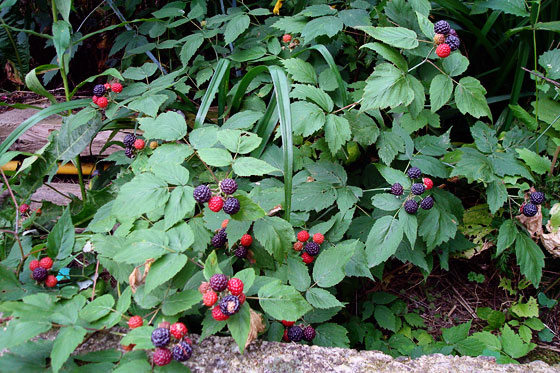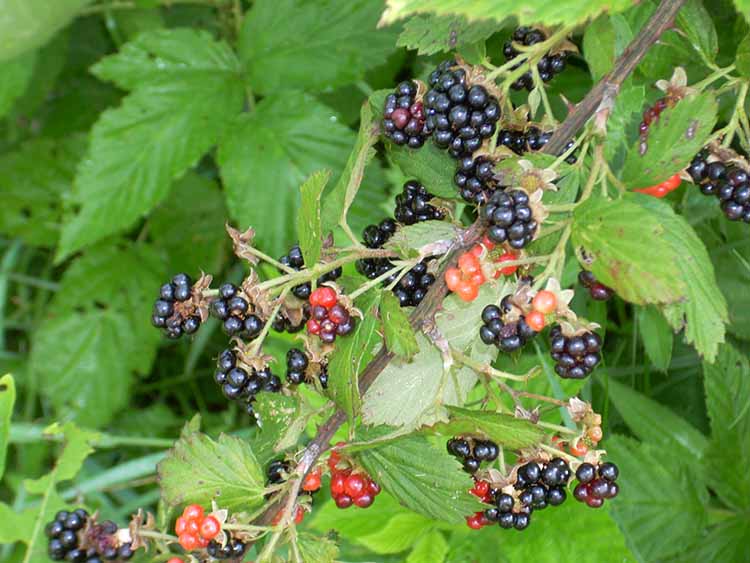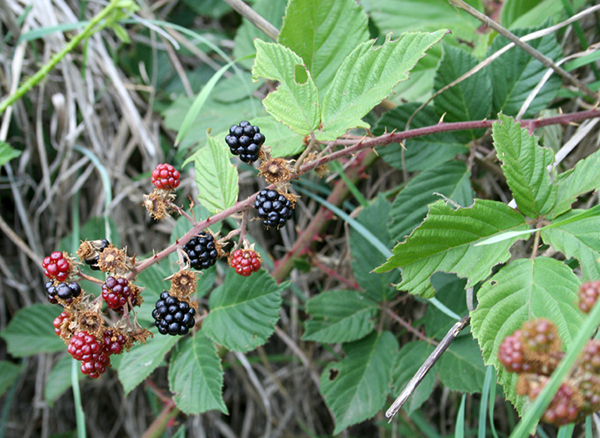Family Name: Rosaceae (Rose Family)
Black raspberry and wild blackberry plants are found throughout Ohio. Although both plants are arching thorny brambles, you can easily differentiate them by looking for the white coating on the stems of the black raspberry plants and the raised ridges on the stems of the wild blackberry plants.
Black Raspberries
Wild Blackberry plants have tasty fruit and grow very fast. Because of their rapid growth, they are considered invasive in many areas. These plants are ramblers rather than climbers which means that they form bushes rather than being a vine. The stems have sharp thorns for protection from predators. Wild blackberries are found on the edge of the forested areas and in open prairies. They have 3-7 leaflets per group.
Wild Blackberries
If you look closely, Black Raspberry plants are fairly easy to differentiate from Wild Blackberry. The stems of the Black Raspberry are round and covered with a thin whitish surface bloom, while the wild blackberry’s stem has coarse ridges. The underside of Black Raspberry leaves is so light it is almost white. The Black Raspberry has much thinner thorns than the wild blackberry’s stout thorns.
Both of these plants have thorns on them which provide a good habitat for small wildlife. The berries also provide a good food source for many birds and animals. These plants both provide berries that humans can eat. Wild blackberries only are ripe for 2-3 weeks in the late summer while black raspberries are ripe through most of the early summer.
When you pick a black raspberry, the stem stays with the plant. When you pick a wild blackberry, the stem comes with it. This is the main way to tell if you have a raspberry or a blackberry. Blackberries are generally larger with a sourer taste than the smaller, sweeter black raspberry.
Both of these plants spread rapidly since the seeds in the berries are distributed by wildlife. Some hikers consider these plants to be a nuisance due to the thorns.
References:
http://homeguides.sfgate.com/identify-blackberry-plants-57785.html
http://www.trybackyardfarming.com/forage-for-wild-blackberries-and-blackberry-plants/




